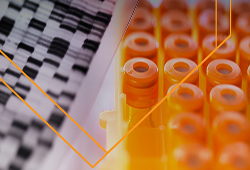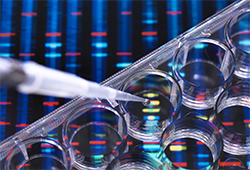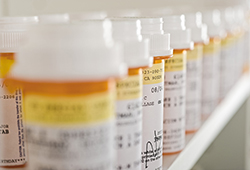 On December 2, 2020, the Department of Health & Human Services (HHS) published its long-awaited two final rules – one by the Office of Inspector General (OIG) and one by the Center for Medicare & Medicaid Services (CMS) – finalizing changes to regulations implementing the federal anti-kickback statute (AKS), the beneficiary inducement provisions of the civil monetary penalty law (CMPL), and the physician anti-self-referral law (Stark Law) and their safe harbors and exceptions. Among the most anticipated aspects of the final rules are the new value-based arrangement AKS safe harbors and Stark Law exceptions.
On December 2, 2020, the Department of Health & Human Services (HHS) published its long-awaited two final rules – one by the Office of Inspector General (OIG) and one by the Center for Medicare & Medicaid Services (CMS) – finalizing changes to regulations implementing the federal anti-kickback statute (AKS), the beneficiary inducement provisions of the civil monetary penalty law (CMPL), and the physician anti-self-referral law (Stark Law) and their safe harbors and exceptions. Among the most anticipated aspects of the final rules are the new value-based arrangement AKS safe harbors and Stark Law exceptions.
The two final rules, while complicated, are aligned in their definitions of value-based arrangements.
A value-based enterprise (VBE) is two or more participants that: (1) are collaborating to achieve at least one value-based purpose; (2) are each a party to a value-based arrangement with the other (or at least one other participant in the same VBE); (3) have an accountable body or person responsible for financial and operational oversight of the VBE; and (4) have a governing document describing the VBE and how its participants intend to achieve the VBE’s value-based purpose(s).
A value-based arrangement is an arrangement entered into between (1) a VBE and one or more of its participants, or (2) among participants in the same VBE, for the provision of one or more value-based activities for a target patient population.
A value-based purpose is (1) coordinating and managing the care of a target patient population; (2) improving the quality of care for a target patient population; (3) appropriately reducing the costs to, or growth in expenditures of, payors without reducing the quality of care for a target patient population; or (4) transitioning from health care delivery and payment mechanisms based on the volume of items and services provided to mechanisms based on the quality of care and control of costs of care for a target patient population.
While the new AKS safe harbors exclude pharmaceutical and medical device manufacturers, distributors, and wholesalers; DMEPOS suppliers; laboratories; compounding pharmacies; and pharmacy benefit managers, there is a narrow exception intended to facilitate the deployment of health technologies for care coordination. These entities are eligible for protection under the care coordination safe harbor as “limited technology participants” that exchange “digital health technology” (defined broadly) with a VBE or VBE participant. The OIG Final Rule provided as an example “a medical technology company could partner with physician practices, to better coordinate and manage care for patients discharged from a hospital with digitally-equipped devices that collect and transmit data to the physicians to help monitor the patients’ recovery and flag the need to intervene in real time (e.g., a device that monitors range of motion that could inform what an appropriate physical therapy intervention may be). The technology company could provide the physician group with necessary digital health technology that improves the physician group’s ability to observe recovery and intervene, as necessary.” However, the OIG final rule requires that the exchange of digital health technology by a limited technology participant is not conditioned on any recipient’s exclusive use of, or minimum purchase of, any item or service manufactured, distributed, or sold by the limited technology participant.
The Stark Law final rule does not exclude such entities from qualifying as VBE participants under any exception for value-based arrangements. However, because the Stark Law is focused on prohibiting self-referrals by physicians, the new Stark Law exceptions for value-based arrangements will be of limited value to medical device and pharmaceutical companies.
 Goodwin Life Sciences and Healthcare partner Roger Cohen and associate Anne Brendel along with Life Sciences and FDA associate Steven Tjoe kicked off Goodwin’s multi-part webinar series “Disrupt + Innovate + Transform: A Healthcare Webinar Series” with “Key Regulatory Issues for Digital Health Companies” discussing the key regulatory issues affecting digital health, telemedicine and healthcare IT companies. The webinar series will be presented by a cross-disciplinary team of Goodwin lawyers exploring the topics that are most relevant for the healthcare industry today. From ever-changing regulatory guidelines to digital health, women’s health and privacy, Goodwin will take attendees through these topics and more and provide guidance to help you navigate the current healthcare landscape.
Goodwin Life Sciences and Healthcare partner Roger Cohen and associate Anne Brendel along with Life Sciences and FDA associate Steven Tjoe kicked off Goodwin’s multi-part webinar series “Disrupt + Innovate + Transform: A Healthcare Webinar Series” with “Key Regulatory Issues for Digital Health Companies” discussing the key regulatory issues affecting digital health, telemedicine and healthcare IT companies. The webinar series will be presented by a cross-disciplinary team of Goodwin lawyers exploring the topics that are most relevant for the healthcare industry today. From ever-changing regulatory guidelines to digital health, women’s health and privacy, Goodwin will take attendees through these topics and more and provide guidance to help you navigate the current healthcare landscape.
 Despite the turmoil and disruption of 2020, plaintiffs’ lawyers and courts appear to have adapted readily to our “new normal.” Although at lower rates than previous years, plaintiffs’ firms continued to file securities class actions against publicly traded pharmaceutical, biotechnology, medical device and healthcare product and services companies in 2020, while courts continued to issue detailed, substantive decisions in these actions. The number of class action filings in state and federal courts from last year shows a 22% decline from a record level in 2019 – a decrease for the first time since 2016, but still far higher than the 1997-2019 average.
Despite the turmoil and disruption of 2020, plaintiffs’ lawyers and courts appear to have adapted readily to our “new normal.” Although at lower rates than previous years, plaintiffs’ firms continued to file securities class actions against publicly traded pharmaceutical, biotechnology, medical device and healthcare product and services companies in 2020, while courts continued to issue detailed, substantive decisions in these actions. The number of class action filings in state and federal courts from last year shows a 22% decline from a record level in 2019 – a decrease for the first time since 2016, but still far higher than the 1997-2019 average.

 On January 19, 2021, the FDA issued
On January 19, 2021, the FDA issued  On January 12, 2021, the U.S. Food and Drug Administration (FDA) published its
On January 12, 2021, the U.S. Food and Drug Administration (FDA) published its  As follow-up to our October
As follow-up to our October  On December 27, 2020, the President signed into law the “Consolidated Appropriations Act, 2021” (the “Act”). Included within this omnibus legislation are several provisions (in Division BB, Title III, Subtitle C) that affect the regulation of generic drugs and biosimilar medicines by the U.S. Food and Drug Administration (FDA).
On December 27, 2020, the President signed into law the “Consolidated Appropriations Act, 2021” (the “Act”). Included within this omnibus legislation are several provisions (in Division BB, Title III, Subtitle C) that affect the regulation of generic drugs and biosimilar medicines by the U.S. Food and Drug Administration (FDA). On December 2, 2020, the Department of Health & Human Services (HHS) published its long-awaited two final rules – one by the
On December 2, 2020, the Department of Health & Human Services (HHS) published its long-awaited two final rules – one by the